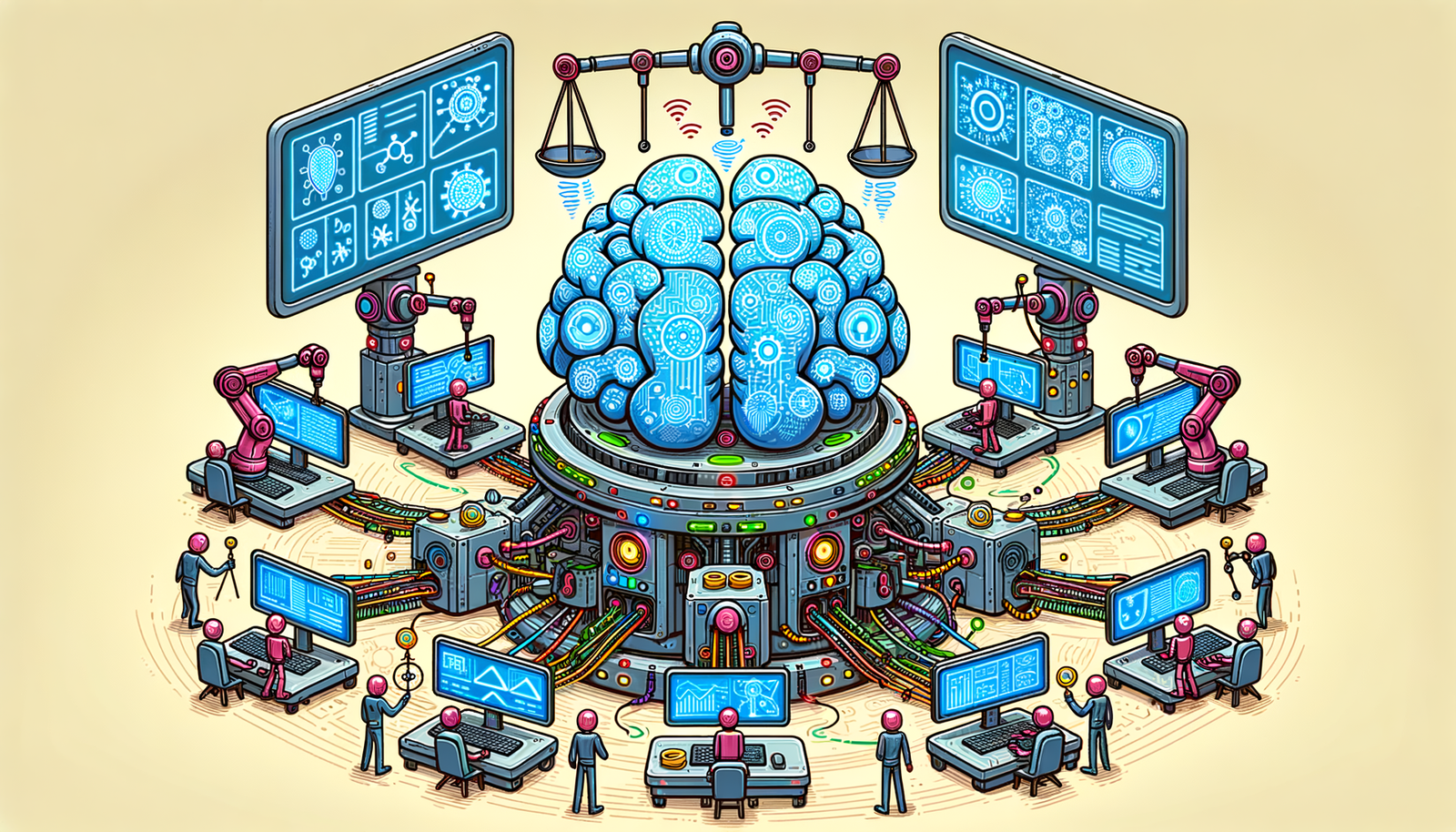Your Cart is Empty
Customer Testimonials
-
"Great customer service. The folks at Novedge were super helpful in navigating a somewhat complicated order including software upgrades and serial numbers in various stages of inactivity. They were friendly and helpful throughout the process.."
Ruben Ruckmark
"Quick & very helpful. We have been using Novedge for years and are very happy with their quick service when we need to make a purchase and excellent support resolving any issues."
Will Woodson
"Scott is the best. He reminds me about subscriptions dates, guides me in the correct direction for updates. He always responds promptly to me. He is literally the reason I continue to work with Novedge and will do so in the future."
Edward Mchugh
"Calvin Lok is “the man”. After my purchase of Sketchup 2021, he called me and provided step-by-step instructions to ease me through difficulties I was having with the setup of my new software."
Mike Borzage
AI-Powered Innovations in Design Validation and Verification: Enhancing Accuracy, Efficiency, and Scalability
September 15, 2024 4 min read


Introduction to AI-Powered Design Validation and Verification
In the realm of design, ensuring a product meets all specifications and performs as intended is paramount. This process is commonly referred to as design validation and verification. Design validation involves confirming that the final product fulfills user needs and requirements, while verification ensures the design accurately reflects the specified criteria. These processes are crucial in the design lifecycle to prevent costly mistakes and ensure quality outcomes.
Traditionally, these tasks have been labor-intensive and prone to human error. However, the advent of artificial intelligence (AI) has significantly enhanced these methods. AI's integration into design software began with basic automation and has grown to include sophisticated algorithms that can analyze and predict outcomes more accurately and efficiently.
Key Technologies in AI-Powered Design Validation and Verification
Machine Learning Algorithms
Machine learning algorithms form the backbone of AI-powered design validation and verification. These algorithms can learn from data, identify patterns, and make decisions with minimal human intervention. The types of machine learning algorithms commonly used in this space include:
- Supervised Learning: Where the algorithm learns from labeled data to make predictions or classifications.
- Unsupervised Learning: Where the algorithm identifies hidden patterns in unlabeled data.
- Reinforcement Learning: Where the algorithm learns by interacting with the environment and receiving feedback.
In design validation, machine learning algorithms can predict potential design failures, optimize design parameters, and even suggest improvements. Their ability to process vast amounts of data quickly makes them invaluable in identifying flaws that may be missed by human inspection.
Neural Networks
Neural networks play a critical role in AI-driven design verification. These networks mimic the human brain's structure and function, enabling them to process complex data sets and recognize intricate patterns. In design verification, neural networks can identify design flaws that traditional methods might overlook.
For instance, a neural network could analyze a CAD model to detect structural weaknesses or compliance issues. These networks continuously improve their accuracy as they are exposed to more data, making them increasingly reliable over time.
Natural Language Processing (NLP)
Natural Language Processing (NLP) is another pivotal AI technology in design verification. NLP enables the interpretation and manipulation of human language by computers. In the context of design, NLP can be used for requirements verification by analyzing textual specifications and ensuring they meet the desired criteria.
NLP can cross-reference design documents with regulatory standards and specifications, highlighting discrepancies and suggesting corrections. This capability is crucial for ensuring that all design aspects comply with industry standards and client requirements.
Benefits of AI in Design Validation and Verification
Increased Accuracy
One of the primary benefits of AI in design validation and verification is the increased accuracy it brings to these processes. AI systems can process vast amounts of data with precision, significantly reducing the likelihood of human error. For example, AI algorithms can identify and correct design flaws with a much higher accuracy rate than manual methods, ensuring a more reliable end product.
Speed and Efficiency
AI also greatly enhances the speed and efficiency of design validation and verification. Traditional methods can be time-consuming, often requiring extensive manual checks and iterations. AI-driven tools can perform these tasks in a fraction of the time, enabling faster project completion and quicker time-to-market.
- Automated analysis of design parameters.
- Rapid identification of compliance issues.
- Instant feedback and adjustment suggestions.
These efficiencies can translate to significant time savings in the design process, allowing designers to focus on creativity and innovation.
Cost Reduction
By catching errors early in the design process, AI helps in reducing costs associated with rework and project delays. Early detection and correction of design flaws prevent costly downstream fixes and improve overall project budgeting. The financial benefits of integrating AI into design workflows are substantial, positively impacting the bottom line.
Scalability
The scalability of AI systems allows them to handle larger, more complex design projects seamlessly. As projects grow in size and complexity, traditional validation methods struggle to keep pace. AI, however, can scale its processes efficiently, managing extensive data sets and intricate design requirements across various industries. This scalability ensures consistent quality and performance, regardless of project scope.
Challenges and Future Trends
Challenges
Despite its benefits, AI-powered design validation and verification face several challenges. One significant hurdle is data dependency and quality. AI algorithms require high-quality, relevant data to function effectively. Poor data quality can lead to inaccurate predictions and flawed outcomes.
Another challenge is the integration with existing design workflows. Many design teams use legacy systems that may not be compatible with modern AI tools. Ensuring seamless integration without disrupting ongoing projects can be complex and requires careful planning.
Finally, there are ethical and regulatory considerations. As AI systems become more prevalent, there is a growing need to address ethical concerns around data privacy, bias, and transparency. Regulatory bodies are still catching up with the rapid advancements in AI, necessitating a careful approach to compliance and ethical standards.
Future Trends
The field of AI-powered design validation and verification is continuously evolving, with several exciting trends on the horizon. One such trend is the continuous improvement in AI algorithms. As algorithms become more sophisticated, they will offer even better accuracy and efficiency in validation and verification processes.
Another notable trend is the role of AI in real-time validation and adaptive design changes. AI systems are increasingly capable of providing instant feedback and making adaptive changes during the design process. This real-time capability will enable more dynamic and responsive design workflows.
Furthermore, the potential for AI in predictive validation and proactive error detection is substantial. AI algorithms can analyze historical data and predict potential issues before they occur, allowing designers to proactively address problems and optimize their designs for future success.
Conclusion
In conclusion, AI is revolutionizing the field of design validation and verification. By leveraging advanced technologies like machine learning algorithms, neural networks, and natural language processing, AI enhances the accuracy, speed, and efficiency of these processes. The benefits are clear: reduced human error, cost savings, and the ability to handle complex projects at scale.
As AI continues to evolve, we can expect further improvements in validation and verification techniques, leading to more innovative and reliable designs. The future of AI in design processes is bright, promising a significant long-term impact on the industry.
Also in Design News

Cinema 4D Tip: Optimizing Geometry Cuts in Cinema 4D for Enhanced Model Efficiency
October 22, 2025 3 min read
Read More
Bluebeam Tip: Maximize PDF Security and Consistency with Bluebeam's Flatten Tool
October 22, 2025 2 min read
Read More
V-Ray Tip: Maximize Rendering Efficiency with V-Ray's Material Override Feature
October 22, 2025 2 min read
Read MoreSubscribe
Sign up to get the latest on sales, new releases and more …


